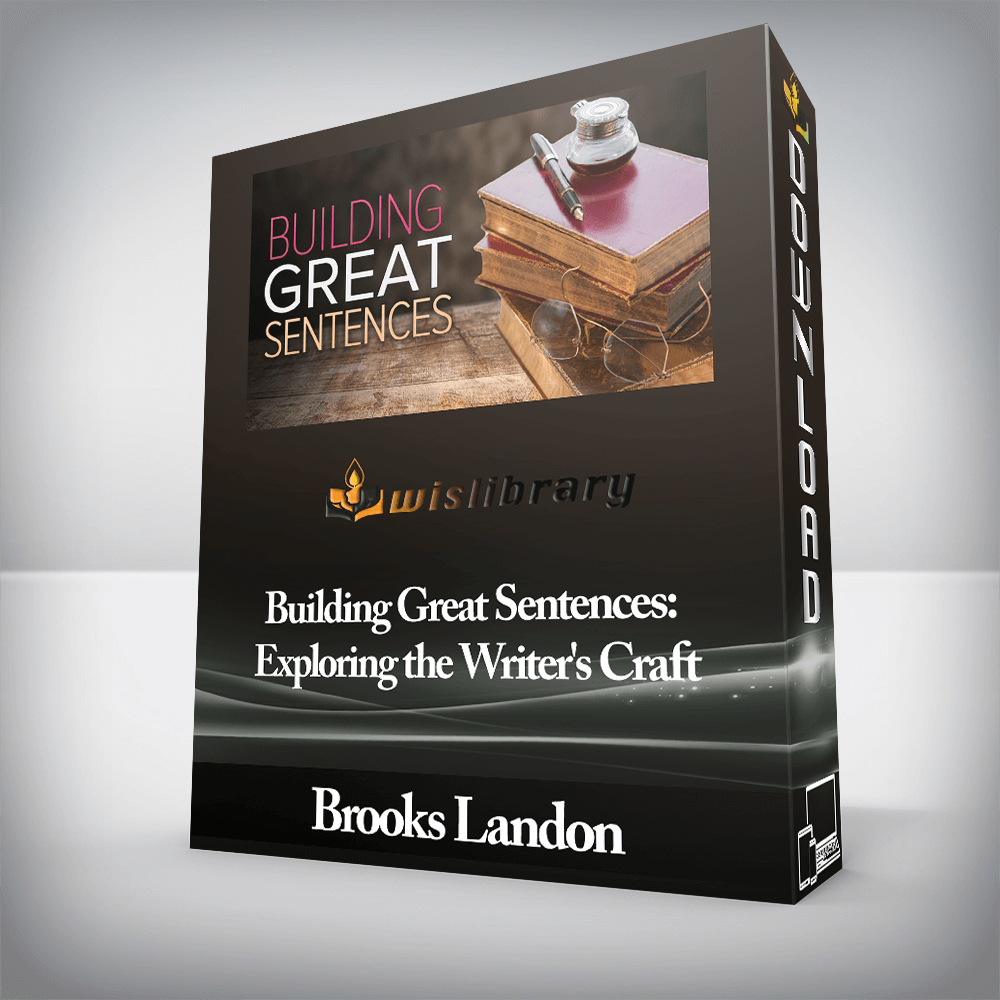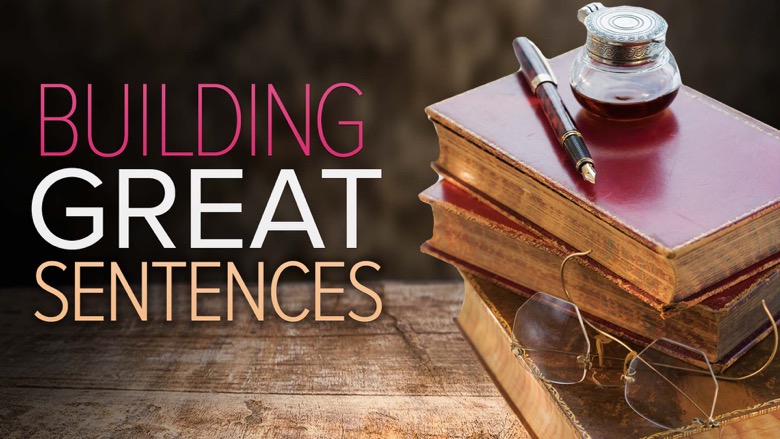

Understanding the variety of ways to construct sentences, from the smallest clause to the longest…


This is a course in which we will dance with language, not a course in which we will trudge toward remedial correctness.
Institution: The University of Iowa
Alma mater: The University of Texas at Austin
Great writing begins—and ends—with the sentence.
Whether two words (“Jesus wept.”) or 1,287 words (a sentence in William Faulkner’s Absalom! Absalom!), sentences have the power to captivate, entertain, motivate, educate, and, most importantly, delight.
Understanding the variety of ways to construct sentences, from the smallest clause to the longest sentence, is important to enhancing your appreciation of great writing and potentially improving your own.
Get the answers to these and other questions about writing and style in Building Great Sentences: Exploring the Writer’s Craft, a lively 24-lecture course taught by Professor Brooks Landon from the University of Iowa—one of the nation’s top writing schools. You explore the myriad ways in which we think about, talk about, and write sentences. You discover insights into what makes for pleasurable reading. You also learn how you can apply these methods to your own writing.
More Than Just a String of Words
Building Great Sentences revives the sentence-oriented approach to studying writing. Unlike common nuts-and-bolts approaches to discussing writing, this course provides a greater context for what makes sentences great. You investigate how to recognize the mechanics of the sentences you read and write, you learn how language works on your thoughts and emotions, and you discover basic strategies to sharpen your ability to recognize great sentences and make your own everyday writing more effective.
More than just a string of words, “sentences are shaped by specific context and driven by specific purpose,” notes Professor Landon. “No ‘rules’ or mechanical protocols can prepare us for the infinite number of tasks our sentences must accomplish.”
Explore a Vast World of Sentences
Consisting of a subject, a verb, and sometimes an object (“The girl raised the flag.”), the kernels from which sentences grow are called minimal base clauses. Adding modifying words (“slowly”) or phrases (“because doing so would inspire her compatriots”) creates larger sentences that lead toward great writing.
In Building Great Sentences, you delve into the ways that literary and popular writers work with these larger sentences (called cumulative sentences) and encounter the three distinct levels that enhance these sentence kernels by:
You also explore sentence constructions that make writing more complex and add exciting levels of suspense, and you see tactics that create balance and rhythm in sentences. Professor Landon makes these writing methods clear and easy to apply to your own reading and writing habits. Some of the many illuminating methods you come across are:
Recognizing and appreciating these and other eye-opening aspects of sentences helps you understand the work that goes into creating an effective, pleasurable sentence. With the newfound knowledge gained from Building Great Sentences, you become more aware of why particular lines, passages, or phrases in the poems, novels, or articles you read so enchant you.
Learn from the Masters
Building Great Sentences draws abundantly on examples from the work of brilliant writers who are masters in the craft of writing, including Don DeLillo, Virginia Woolf, Joan Didion, and Samuel Johnson. Their novels, essays, and short stories are frequently cited to illustrate how sentences can tease, surprise, test, and satisfy you.
Whether it was an epic poem, an 800-page novel, or a passionate op-ed in a local newspaper, you’ve no doubt been captivated by a particular line, passage, or phrase in something you’ve read—but you can’t understand why. With Building Great Sentences, you get the secrets you need not only to recognize great writing, but also to understand what exactly makes it so great.
You also investigate numerous instances in which an author’s writing style reflects key points in the lectures. For example:
Professor Landon’s animated readings of these and other examples (including some of his own sentences) help you grasp the various structures and rhythms of sentences. They also give you new ways to look at why these and other writing styles have delighted so many readers.
Avoid Dense Grammar
Building Great Sentences provides you with key insights into the craft of writing, but it never becomes a dull grammar lesson. Rather, the course is designed as a study of sentences within the larger framework of prose style and writing theory.
Grammar is only used to address larger issues about writing; as you examine the rewards (and potential risks) of various sentence forms, you never become bogged down in a study of dense grammar.
You focus on why and how these various sentence forms use language to achieve particular goals, not on labeling parts of a sentence. A thorough and helpful study of what makes for elegant and effective writing, notes Professor Landon, cannot depend solely on grammar.
A Passionate Approach to the Craft
Professor Landon is the Director of the General Education Literature Program at the University of Iowa and the recipient of the school’s M. L. Huit Teaching Award. Having regularly taught a sentence-based prose style course at the University of Iowa for more than 25 years, he is the perfect guide to take you into the intricate pleasures of great sentences.
Building Great Sentences stems from Professor Landon’s passion for a sentence-based approach to writing, commonly overshadowed by more technical, theory-based approaches that ignore the pleasures of reading and writing.
You see Professor Landon’s countertraditional approach—emphasizing the pleasure of language and not the avoidance of mistakes. This method makes this course a unique way to experience and understand the pleasure that Gertrude Stein found in the sequences of words that constitute our sentences.
With its passionate approach to writing and reading, and its indulgence in the sheer joy of language, Building Great Sentences will change the way you read and write. It’s a journey that gives you unique insights into the nature of great writing—it also teaches you how you can achieve some of this greatness yourself.
2. Grammar and Rhetoric
3. Propositions and Meaning
4. How Sentences Grow
5. Adjectival Steps
6. The Rhythm of Cumulative Syntax
7. Direction of Modification
8. Coordinate, Subordinate, and Mixed Patterns
9. Coordinate Cumulative Sentences
10. Subordinate and Mixed Cumulatives
11. Prompts of Comparison
12. Prompts of Explanation
13. The Riddle of Prose Rhythm
14. Cumulative Syntax to Create Suspense
15. Degrees of Suspensiveness
16. The Mechanics of Delay
17. Prefab Patterns for Suspense
18. Balanced Sentences and Balanced Forms
19. The Rhythm of Twos
20. The Rhythm of Threes
21. Balanced Series and Serial Balances
22. Master Sentences
23. Sentences in Sequence
24. Sentences and Prose Style
There are no reviews yet.
You must be <a href="https://wislibrary.org/my-account/">logged in</a> to post a review.